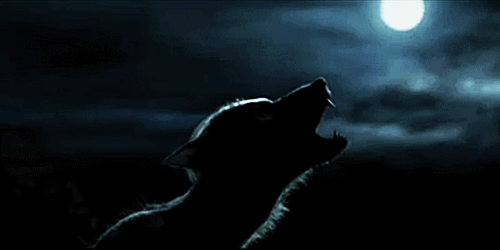An Astronomy Lesson for Moon Day
Our neighbor the moon has always captured a special place in our imaginations. Maybe it’s the way we can watch its face change from night to night. Maybe it’s the way the tides ebb and flow according to its position in the sky, or maybe it’s a deeper, more magical connection we’ll never be able to put words to.
The moon certainly holds this magical power in the wizarding world, and all of its appearances throughout the Potter series align with various alchemical and mythological themes.
Since ancient times, the moon has been a symbol of the unknown, the hidden mysteries of the world. Many of Harry’s experiences took place out of sight from most of the wizarding world, and J.K. Rowling used moonlight to highlight the secret nature of his exploits. In Chamber of Secrets, Ron, Fred, and George rescued Harry from the Dursley house and flew away beneath the light of a full moon. Prisoner of Azkaban opens with Harry reading his spellbooks in the moonlight away from the prying eyes of the Dursleys.
Sinister deeds took place under cover of moonlight as well; the moon shone down on Severus Snape and Yaxley on their way to Malfoy Manor in Deathly Hallows. During Half-Blood Prince, a crescent moon lit the night sky on the evening Death Eaters invaded Hogwarts.
The moon appeared when Harry was making magic just out of the Dursleys’ sight and lit his way while he snuck around Hogwarts. Moonlight illuminated Aragog’s body during Half-Blood Prince and shone on the floor on Harry’s way to the prefects’ bathroom during Goblet of Fire. This trip brought him information about the second task in the Great Lake; later in the book, the lake seemed as far away to Harry as the moon, drawing a connection between the sky’s mysterious orb and water.
Water and the moon are connected for a variety of reasons; the vast depths of oceans are just as perplexing to us today as the moon was to our ancestors. The darker areas of the moon are called maria, which is Latin for “seas.” Both are associated with emotions and intuition, and Luna Lovegood may be the most intuitive character throughout the books. A ghostly moon appears above her house when Harry, Ron, and Hermione go to visit during Deathly Hallows.
Some potions required the brewer to pay attention to the lunar cycle to ensure their successful creation. Veritaserum took a full moon cycle to mature, and the fluxweed necessary for Polyjuice Potion had to be picked beneath a full moon. It’s never mentioned, but I imagine the Wolfsbane Potion required certain attention to the lunar cycle, given its purpose.
The moon represents the subtle, things going on beneath the surface, and lycanthropy is a magical ailment largely occurring out of sight of the rest of the wizarding world. Other creatures were affected by the full moon as well, such as the basilisk; the light of a full moon could cause a basilisk egg to hatch. The elusive mooncalf only comes out of its burrow in the light of the full moon for its mating dance.
What connections have you noticed between events in the Potter series and the moon? What kinds of lessons do you think Harry and his classmates learned with Professor Sinistra on Wednesdays at midnight in the Astronomy Tower?





